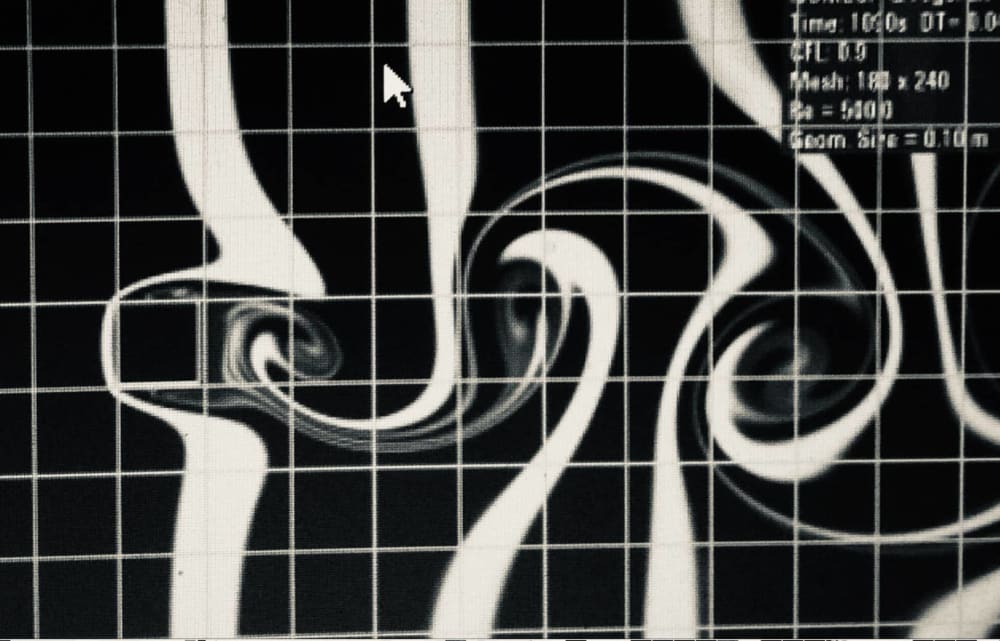Update to the Storm Wave Mitigation Project
We had access to a CFD application where we simulated the effect of an Edinburgh Duck facing a wavefront. This is captured in the sidebar with the solid white bar representing the oncoming wave front. The display shows the influence of the Duck (the square) as the wavefront encounters it and then attempts to balance out the reduced energy level downstream of the Duck.
By changing direction (using up some of its energy) this effectively alters the impact of the storm wave on the shoreline.
What this implies is that a scattered non continuous array of Edinburgh Ducks would influence the storm waves reducing their energy level sufficiently to reduce impact on the shorelines.
This reduces the cost of implementing any system, and simplifies the Duck configuration.
The nodding action would pump water from a calibrated nozzle arranged to send a fine spray of water into the air and this, in turn, would locally influence the wind conditions in the vicinity, which in turn modifies the wind strength reaching the shoreline.
A Proof of Concept arrangement can be put together at much lower costs and reduced risks to evaluate the spacing effectiveness of Duck pairs with respect to vulnerable shoreline locations
In the case of Lake Erie shoreline communities the cost of implementing the remediation Project would be shared among all affected municipalities and since the number of Edinburgh Ducks required is reduced the costs become competitive with fixed breakwater or rock rubble armouring costing lakefront owners up to $100,000 to fix and in the case of one municipality $1,000,000 to fix a range of shoreline damages.
Since the wave amplitude increases and the wave length decreases as the storm wave enters the shoreline shallows, the individual Ducks can be strategically anchored at the best place in the shallows to reduce the local wave power front.
A spinoff of using Edinburgh Ducks in this application is that by instrumenting the Duck to record essentially what it’s accomplishing and comparing it with the wave front energy the Duck characteristics can be fine tuned over time to perform as consistent Wave Energy Converters for Electrical Generation contributing to reductions in GHG and (obviously) mitigating tens of millions of shoreline damage due to storm waves, now at substantially reduced costs because of this simplification.
Like this entry?
-
About the Entrant
- Name:John Mitchell
- Type of entry:teamTeam members:Jim Grimwood, Peter Meyer, Bruce Chambers, John Mitchell
- Software used for this entry:CFD App
- Patent status:none

